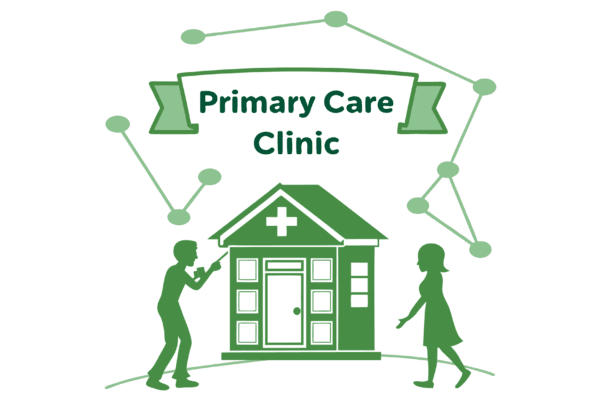Selling your plastic surgery practice is one of the most significant financial decisions you will ever make. For owners in Albuquerque, the current market presents unique opportunities and challenges. This guide offers a clear overview of local market dynamics, the sale process, and how to position your practice for a successful transition. Proper preparation is the foundation of a rewarding outcome. It ensures you can navigate the process with confidence and clarity.
Not sure if selling is right for you?
Market Overview
The M&A climate for plastic surgery in Albuquerque is shaped by a distinct set of local and regional factors. For practice owners, understanding this landscape is the first step toward a successful sale. Here s what we see happening on the ground.
- Steady Demand Growth. Albuquerque is expanding, attracting new residents and increasing the demand for both cosmetic and reconstructive procedures. Unlike hyper-competitive markets like Miami or Los Angeles, this growth is stable, creating a healthy environment for established practices.
- Increased Buyer Interest. We are seeing more interest from regional health systems and private equity-backed platforms looking to enter or expand in the Southwest. These buyers are attracted to the area’s favorable economic outlook and are often looking for well-run, physician-led practices to serve as a foothold.
- A Favorable Regulatory Climate. New Mexico offers a relatively stable regulatory and reimbursement environment compared to other states. This predictability is attractive to buyers, as it reduces perceived risk and makes financial forecasting more reliable.
Key Considerations
Beyond the market data, a successful sale hinges on careful, personal preparation. The highest valuation does not always lead to the best outcome if the partner is not the right fit for your goals. You should consider who you want to sell to. A private equity group has different objectives than a local hospital system, and each path has profound implications for your clinical autonomy and your team’s future. It is also important to define what makes your practice special. Buyers are not just purchasing equipment and patient lists. They are investing in your reputation, your referral network, and your unique procedural mix. Articulating this story is just as important as presenting clean financial statements. Finally, think about your legacy. A structured transition plan ensures your staff is secure and your patients continue to receive excellent care, protecting the practice you spent a lifetime building.
Market Activity
The abstract idea of a “good market” becomes real when you see who is writing checks and what they value most. In Albuquerque and the broader Southwest, the activity is distinct.
Who Is Buying in New Mexico?
The buyer pool is diversifying. While practice-to-practice sales still occur, the most aggressive buyers are often private equity-backed platforms. These groups are looking to build regional density and are actively seeking established plastic surgery practices. They bring operational expertise and capital for growth. We are also seeing regional health systems explore acquisitions to round out their specialty service lines. These buyers are often focused on capturing referrals and integrating the practice into their larger network.
What Drives Premium Valuations?
Buyers are willing to pay more for practices that are less risky and have clear growth paths. Key value drivers include having multiple providers, which reduces dependency on a single owner. A strong component of high-margin, cash-pay cosmetic services is also highly attractive. Finally, practices with a documented history of steady growth and a clear strategy for future expansion command the highest interest. Buyers pay for proven performance, not just potential.
The Sale Process
Selling a practice is not like selling a house. It is a confidential and complex process managed in distinct stages to protect your business and maximize your outcome. It begins with professional preparation, where we work with you to analyze your financials and determine a defensible valuation. Once prepared, we confidentially market the opportunity to a curated list of qualified buyers, creating a competitive environment without alerting your staff or competitors. Interested parties sign non-disclosure agreements before receiving information. This leads to formal offers and the negotiation of a Letter of Intent (LOI), which outlines the core terms of the deal. The final, and often most intense, phase is due diligence. Here, the buyer verifies everything about your practice. This is where many self-managed deals encounter trouble, but with proper preparation, it becomes a smooth validation before closing.
Valuation
Your practice is worth what a qualified buyer is willing to pay. Sophisticated buyers determine this value using a straightforward formula: Adjusted EBITDA x a Valuation Multiple. The most important metric is Adjusted EBITDA, which stands for Earnings Before Interest, Taxes, Depreciation, and Amortization. We calculate this by taking your reported profit and adding back owner-specific personal expenses and any above-market owner salary. This gives a true picture of the practice’s cash flow. That number is then multiplied by a multiple, which is determined by risk and growth potential. Many factors influence this multiple.
| Factors That Increase Your Multiple | Factors That Decrease Your Multiple |
|---|---|
| Multiple providers or associates | 100% reliance on the owner |
| Strong, recurring cosmetic revenue | Heavy reliance on low-margin insurance |
| A modern facility with new equipment | Outdated facility or equipment |
| Documented year-over-year growth | Flat or declining revenue |
Getting this right is not just math. It is about telling the story of your practice in a way that justifies the highest possible multiple.
Post-Sale Considerations
The work is not over once the sale documents are signed. The structure of your deal has long-lasting implications for your financial future and personal life. Your role after the sale is defined in an employment agreement, and it is critical to negotiate terms that align with your desired work-life balance. Many deals also include an “earnout,” where a portion of the sale price is paid out over time if the practice hits certain performance targets. It is also important to consider the tax implications. The way a deal is structured can dramatically change your net, after-tax proceeds. Planning for this from the start is one of the most important parts of the process. Most importantly, a well-managed transition ensures your legacy is preserved, your staff is valued, and the practice continues to thrive under new ownership.
Frequently Asked Questions
What is the current market environment for selling a plastic surgery practice in Albuquerque, NM?
The Albuquerque market is characterized by steady demand growth due to population expansion, increased interest from regional health systems and private equity-backed buyers, and a favorable regulatory climate that makes the area attractive for buyers.
Who are the typical buyers interested in plastic surgery practices in Albuquerque?
Typical buyers include private equity-backed platforms seeking to build regional presence, regional health systems looking to integrate specialty service lines, and other established practices interested in acquisitions.
What factors can increase the valuation multiple of a plastic surgery practice in Albuquerque?
Factors that increase valuation multiples include having multiple providers, strong recurring cosmetic revenue, a modern facility with new equipment, and documented year-over-year growth.
What is the general process for selling a plastic surgery practice in Albuquerque?
The process includes professional preparation and valuation, confidential marketing to qualified buyers, receiving and negotiating offers, signing a Letter of Intent (LOI), conducting due diligence, and finally closing the deal.
What post-sale considerations should a seller keep in mind when selling their plastic surgery practice?
Post-sale considerations include negotiating an employment agreement that fits the seller’s desired work-life balance, understanding possible earnouts based on performance targets, planning for tax implications, and ensuring a smooth transition to preserve staff morale and the practice’s legacy.



